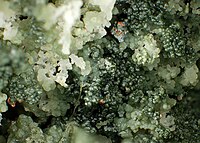The Two-Faced Troublemaker: Bacillus cereus, the Jekyll and Hyde of Bacteria
Bacillus cereus is the bacterial world’s very own shape-shifting supervillain! This microscopic menace is the master of disguise, equally at home in your garden soil as it is crashing your dinner party. Picture, if you will, a rod-shaped rascal with a penchant for party-crashing. B. cereus is
Flacherie (and a ridiculous history of Bt development…roundabout)
History of Bt Development as told in New Innovative Pesticides: An Evaluation of Incentives and Disincentives for Commercial Development by Industry, Stanford Research Institute (Final Report dated September 1977, Prepared for Economic Analysis Branch Criteria and Evaluation Division Office of Pesti
Bacillus thuringiensis: the James Bond of biological pest control
In the microscopic world of bacteria, Bacillus thuringiensis (Bt), a gram-positive, soil-dwelling microbe is the go-to secret agent for farmers and gardeners worldwide, thanks to its uncanny ability to produce crystal-clear killers. From Silkworms to Superbugs Our story begins in 1902 when Japanese
Laterite
Laterite is a soil type rich in iron and aluminium and is commonly considered to have formed in hot and wet tropical areas. Nearly all laterites are of rusty-red coloration, because of high iron oxide content. They develop by intensive and prolonged weathering of the underlying parent rock
Saprolite
Saprolite is a chemically weathered rock. Saprolites form in the lower zones of soil profiles and represent deep weathering of the bedrock surface. In most outcrops, its color comes from ferric compounds. Deeply weathered profiles are widespread on t
Detritus (geology)
Detritus is particles of rock derived from pre-existing rock through weathering and erosion. A fragment of detritus is called a clast. Detrital particles can consist of lithic fragments (particles of recognisable rock), or of monomineralic fragments (mineral grains). These particles are of
Detritivores – the ultimate recyclers
These marvelous morsels of nature’s cleanup crew are the ultimate recyclers, turning yesterday’s trash into tomorrow’s treasure. Let’s dive into the delightfully dirty world of detritus dining! Imagine a world where your leftovers never go to waste. Well, in nature, that̵
Diagenesis (the Petrologic principle)
Diagenesis is the process that describes physical and chemical changes in sediments first caused by water-rock interactions, microbial activity, and compaction after their deposition. Increased pressure and temperature only start to play a role as sediments become buried much deeper in the E
Flame Test
A flame test is relatively quick test for the presence of some elements in a sample. The technique is archaic and of questionable reliability, but once was a component of qualitative inorganic analysis. The phenomenon is related to pyrotechnics and atomic emission spectroscopy. The color of t
Delta endotoxins (δ-endotoxins) are pore-forming toxins produced by Bacillus thuringiensis species of bacteria. They are useful for their insecticidal action and are the primary toxin produced by Bt maize/corn.
Bt maize/Bt corn is a variant of maize that has been genetically altered to express one or more proteins from the bacteriumBacillus thuringiensis including Delta endotoxins. During spore formation the bacteria produce crystals of such proteins (hence the name Cry toxins) that are also
Ovalbumin
Ovalbumin (abbreviated OVA) is the main protein found in egg white, making up approximately 55% of the total protein. Ovalbumin displays sequence and three-dimensional homology to the serpin superfamily, but unlike most serpins it is not a serine protease inhibitor. The function of oval
Tobacco-derived 4R-cembranoid confers neuroprotection against LPS-induced hippocampal inflammation in mice (decreases levels of pro-inflammatory cytokines; improves memory function; activates STAT3, Akt1, and CREB phosphorylation; and upregulates the mRNA levels of ORM2, GDNF, and C3) independent of the α7 nicotinic receptor
Rojas-Colón, L.A., Dash, P.K., Morales-Vías, F.A. et al. 4R-cembranoid confers neuroprotection against LPS-induced hippocampal inflammation in mice. J Neuroinflammation 18, 95 (2021). https://doi.org/10.1186/s12974-021-02136-9 LPS: Lipopolysaccharide “4R protects the hippocampus against
Tobacco-derived 4R-cembranoid protects neuronal cells from oxygen-glucose deprivation by modulating microglial cell activation
Fu, Hefei et al. “4R-cembranoid protects neuronal cells from oxygen-glucose deprivation by modulating microglial cell activation.” Brain research bulletin vol. 179 (2022): 74-82. doi:10.1016/j.brainresbull.2021.12.007 In the search for novel compounds to treat neurodegenerative diseases, we fo
Patent for protecting and treating organophosphate-induced neuronal injury with tobacco-derived cembranoids and analogues
Ford, Byron, Ferchmin Peter, Eterovic, Vesna, Methods and compositions for protecting and treating neuroinjury (Patent), United States Grant US-8530525-B2 Assignee: Central University of the Caribbean, Morehouse School of Medicine, Status: Active, Expires 2031-05-19, Document history 2013-09-10
Identification of cembratriene-4,6-diol as antitumor-promoting agent from cigarette smoke condensate
Yutaka Saito, Haruo Takizawa, Sumie Konishi, Daisuke Yoshida, Shigenobu Mizusaki, Identification of cembratriene-4,6-diol as antitumor-promoting agent from cigarette smoke condensate, Carcinogenesis, Volume 6, Issue 8, August 1985, Pages 1189–1194, https://doi.org/10.1093/carcin/6.8.1189
Tobacco use is negatively associated with the risk of developing skin cancer, prostate cancer, multiple myeloma, endometrial carcinoma, or breast cancer (negatively associated with means less disease associated with)
Impact of tobacco smoking on the risk of developing 25 different cancers in the UK: a retrospective study of 422,010 patients followed for up to 30 years. Jacob L, Freyn M, Kalder M et al (2018) Impact of tobacco smoking on the risk of developing 25 different cancers in the UK: a retrospective study








